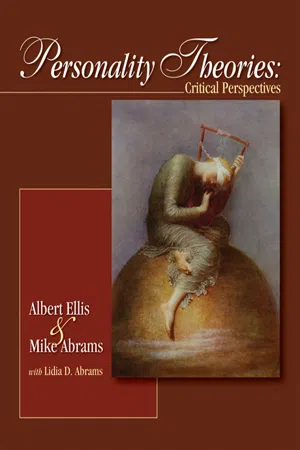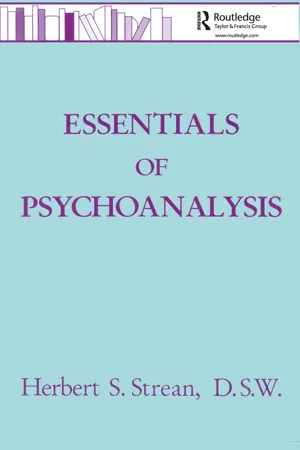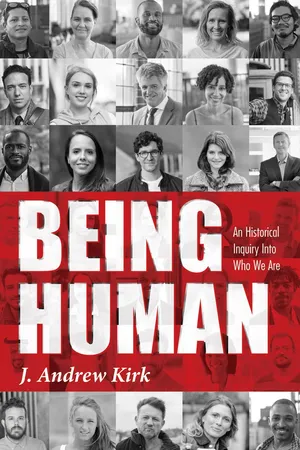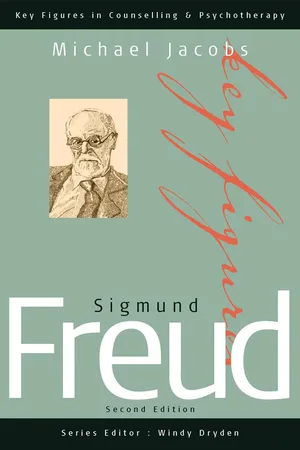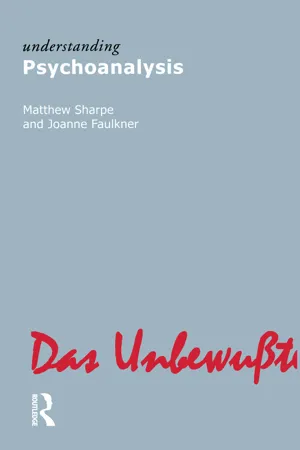Psychology
Sigmund Freud
Sigmund Freud was an Austrian neurologist and the founder of psychoanalysis, a clinical method for treating psychopathology through dialogue between a patient and a psychoanalyst. He is best known for his theories on the unconscious mind, the role of childhood experiences in shaping adult personality, and the development of psychosexual stages. Freud's work has had a profound influence on psychology and continues to be widely studied and debated.
Written by Perlego with AI-assistance
Related key terms
9 Key excerpts on "Sigmund Freud"
- eBook - ePub
Personality Theories
Critical Perspectives
- Albert Ellis, Mike Abrams, Lidia Dengelegi Abrams(Authors)
- 2008(Publication Date)
- SAGE Publications, Inc(Publisher)
Chapter 4Freud and the Dynamic Unconscious
Chapter Goals- Place psychoanalysis in its historical context
- Discuss Freud the man and the time in which he wrote
- Explain the development of psychoanalytic theory
- Detail the components and complexities of Freud’s theories
- Understand the pervasive influence of Freud and his theories
- List and explain some alternative points of view and the controversies surrounding Freudian theory
PSYCHOANALYSIS: THE FIRST COMPREHENSIVE THEORY OF THE PSYCHE
Chapter 2 put forward various historical views of personality and showed how these views have evolved over the last two millennia. There were a few critical points over the course of this history; one of them was Sigmund Freud’s development of psychoanalytic theory. Freud is a pivotal figure not because he discovered previously unknown essential truths about human nature but rather because he set a standard for personality psychology. Freud proposed a comprehensive explanation of virtually all aspects of human behavior, both individual and collective. In addition, he attempted to explain how behavior developed in the individual and how the individual develops as a member of the human species (Ellenberger, 1970).Photo 4.1 Sigmund Freud (1856–1939)There are grave problems with many facets of Freud’s theory. Even in Freud’s inaccuracies, however, there is an intellectual elegance and intrigue that is at least in part responsible for the popularity of his ideas. Like them or not, Freud’s theories have profoundly influenced many aspects of 20th- and 21st-century Western culture, from the graphic arts and literature to film and drama, as well as the practice of psychiatry. It is quite likely that you had heard of Freud before you opened this book or even before you took your first course in psychology. Terms like neurotic, anal, penis envy, Oedipus complex, or repression, were part of your vocabulary before you embarked on any study of psychoanalysis. And for better or worse, mental health professionals are inextricably linked with Freudian concepts in the minds of a large percentage of the lay public. The notion that psychoanalysis is synonymous withpsychotherapy - eBook - ePub
- Herbert S. Strean(Author)
- 2013(Publication Date)
- Routledge(Publisher)
1
FREUD AND HIS THEORY OF PERSONALITY
Just as psychoanalysis as a personality theory, treatment method, and research perspective has been steeped in controversy ever since its inception, Sigmund Freud, the founder of the art and science, may be regarded as one of the most controversial figures of the 20th century. Highly esteemed for his monumental discoveries, he is severely derogated for his alleged prejudices. Some aver that he is more influential than any other human being in civilization in acquainting us with the child in ourselves, while others blame him as a prime source of modern sexual libertinism and for many of the other ills of contemporary life (Roazen, 1975).Those who regard Freud as a genius compare him to Darwin, Einstein, or Galileo (Jones, 1957). They point to his many creative contributions such as the dynamics of the unconscious, infantile sexuality and psychosexual development, the interpretation of dreams, the role of fantasies, the process of free association, the crucial importance of transference in and out of the therapeutic situation, the inevitability of human resistance to change, and many more discoveries (Freeman & Strean, 1987).Those who condemn Freud view him as a male chauvinist who was a preserver of the status quo. They contend that he exaggerated the importance of the penis, erroneously postulated a death instinct, naively assumed that children inherit acquired characteristics, and incorrectly averred that women have weaker superegos than men (Masson, 1984, 1990).Even among psychoanalysts and other mental health professionals there is only limited consensus on Freud's findings. During the last two decades classical Freudians have been severely criticized by object-relations experts and proponents of self psychology, to name just two dissenting groups of psychoanalysts who fault Freud for many of his positions on personality formation and treatment. Yet, there are other clinicians who claim nothing much has been discovered about personality theory or treatment since Freud entered on the psychotherapeutic stage (Malcolm, 1981). - eBook - ePub
Personality Theories
Development, Growth, and Diversity
- Bem P. Allen(Author)
- 2015(Publication Date)
- Psychology Press(Publisher)
2The Psychoanalytic Legacy: Sigmund Freud
Sigmund Freud National Library of Medicine• Is the relationship between boy and mother special?• How much of what we call our “minds” is unconscious?• Is the unconscious revealed in our dreams?W hen asked about personality, Sigmund Freud responded in a tone usually reserved for the revelation of timeless truths. Some of his answers are important contributions to understanding personality. Others, offered with equal certainty, are less helpful. However, Freud clung to all of his ideas with great tenacity. He was suspicious of those who disagreed with any of his notions. Carl Jung, and many other early followers, soon split with Freud as their ideas began to deviate from his. Nevertheless, all were influenced by him, whether they admitted it or not.Freud, the Person
Sigmund Freud was born on May 6, 1856, in Moravia, a Germanic area that is now a part of the new Czech Republic. He was the oldest of Amalie and Jakob Freud’s eight children. Amalie, Jakob’s second wife, 20 years his junior, bore her “golden Sigi” at age 21. She had a lively personality and was sharp-witted. Jakob, a wool merchant, had a good sense of humor and was a liberal thinker. They were Jewish.Sigmund was scarcely 10 when he entered high school and only 17 when he entered medical school at the University of Vienna, where he used his photographic memory to excel as a student of neurology (1994 materials from the Freud Museum, Vienna). Young Freud was most influenced by Professor Ernst Brucke, a respected and disciplined physiologist with an uncompromising spirit and a stare that could petrify students.During medical school, Freud was preoccupied with becoming well known and economically secure by making some important discoveries (Jones, 1953; Parisi, 1987). His research as a student included: (1) dissecting 400 male eels to show, for the first time, that they had testes; (2) discovering new characteristics of neurons (nerve cells) in fish; and (3) developing the first gold-chloride technique of staining nerve tissue. It is also note-worthy that Freud’s notion of “contact barriers” anticipated the concept “synapse,” the space between neurons (Parisi, 1987). Using himself as a subject, he discovered that cocaine was an effective anesthetic (Parisi, 1987). However, contrary to still-circulating rumors, he was not a lifelong cocaine user. Nevertheless, he did once recommend the widespread use of cocaine, even by injection (McCullough, 2001). He was 25 when he received his MD degree (1994 materials from the Freud Museum, Vienna). - eBook - ePub
Dimensions of Psychoanalysis
A Selection of Papers Presented at the Freud Memorial Lectures
- Joseph Sandler(Author)
- 2018(Publication Date)
- Routledge(Publisher)
Three Essays on the Theory of Sexuality (1905d); in this last he discussed not only the development of sexuality in childhood but also its deviations in adult life and the paths it must follow during adolescence if it is to eventuate in what is generally accepted as normal adult sexuality. In this way, by 1905 Freud had established firmly the basis of psychoanalytic psychology.Let me therefore outline some of the fundamental findings and convictions that were characteristic of psychoanalysis at that time—findings that are still at the centre of its approach to the study of human behaviour and experience.(1) First among these is the hypothesis that what is mental or psychical is by no means limited to those things of which we are consciously aware—that many, indeed most, of the processes that go on in us proceed without our being aware of them, and yet these unconscious processes are so akin to conscious ones that it is difficult or impossible to deny them the designation ‘mental’.(2) It frequently happens that a conflict of interests arises between different mental processes, intentions or wishes. This conflict is itself often not conscious, since one or more of the conflicting tendencies is likely to be an unconscious one.(3) What is going on mentally here and now is strongly influenced by the past life and experiences of the individual, and this influence is something of which he is in most cases not immediately aware; frequently he is in fact incapable of knowing it except after arduous analytic work. Underlying this fact is the broad principle of developmental influence—the principle, that is, that present behaviour and experience cannot be understood or accounted for meaningfully except in relation to the past history of the person in question.(4) This past history is in large part the history of the person’s relationships and experiences with other persons, and most fundamentally the history of his childhood and his relationships with his parents or those who carried out the parental function. Without parents or their surrogates no infant can, after all, survive.(5) These early relationships are by no means limited to the provision by the parents of the means of survival in the purely material sense. Man does not live by bread alone, and an essential building material for the child’s development—certainly for his successful development—is the presence of love and devotion on the part of the parents, which is a condition for the possibility of the child’s developing fully his own capacity for loving, affectionate relationships. The development of such relationships cannot be properly understood without some familiarity with the unfolding of sexual impulses and wishes in the growing child and without the recognition of the fact that these do not begin at puberty but express themselves from early infancy onwards in different forms that vary greatly with the growth of the child and the stage of development he has reached. - Intelligent Education(Author)
- 2020(Publication Date)
- Influence Publishers(Publisher)
Sigmund Freud INTRODUCTIONIn discouraging an attempt to abbreviate and summarize his works, Freud once remarked that he felt such undertakings usually deterred the reader from going to the original sources themselves and, at the same time, such abbreviated summaries deluded him into believing that he had obtained a sufficient grasp of the subject matter. The author trusts that such will not be the case with the present volume. The range, depth, and profundity of Freud’s thought, the incalculable influence his discoveries have had in all areas of human understanding, and the sometimes tortured twistings and turnings, revisions and recantations that his theories underwent over a creative life which spanned almost half a century defy any attempt at a summary description. There is just too much there. Contrary to a popular misconception, Freud was not dogmatic. Many of his most important conclusions were put forth with the greatest tentativeness and, especially in some of his later works, his ideas often suffer from inconclusiveness and are even a little vague. Freud was a complete dualist and his theories sometimes seem to be expressions of his own personal ambivalence; that is, the inability (or refusal) to hold a single exclusive position and deny the truth of its opposite. This fact makes for a rich comprehensiveness but it also substantially contributes to the difficulties the beginner will find in the attempt to say clearly and with authority just what Freud’s ideas were.Varied and conflicting schools of psychology have grown out of the seeds which Freud so liberally scattered throughout his writings. (A student once observed that a Freudian footnote was often worth more than chapters by other psychologists.) And one of the principal tasks of this brief work will be the attempt to help clarify just what Freudian Psychoanalysis is, and just what it is not. A monumental confusion abounds in the minds of students and professionals alike in attempting to distinguish the principles of Psychiatry and Psychotherapy. These terms are often used with a great deal of imprecision as interchangeable, which they are not! As a brief working definition of Psychoanalysis, the author proposes the following: Psychoanalysis is just what Freud says it is and nothing else. He himself felt bitter about the appropriation of the term made by C. G. Jung and others and argued in the Introductory Lectures- eBook - ePub
Being Human
An Historical Inquiry Into Who We Are
- J. Andrew Kirk(Author)
- 2019(Publication Date)
- Wipf and Stock(Publisher)
9Sigmund Freud and Human Pathologies
The theory of repression became the corner-stone of our understanding of the neuroses . . . The (aim of) the task of therapy (was) to uncover repressions and replace them by acts of judgment which might result in the accepting or condemning of what had been formerly repudiated. I showed my recognition of the situation by no longer calling my method of investigation and treatment catharsis but psycho-analysis.—Freud, An Autobiographical Study (1925 )It may be asked whether and how far I am myself convinced of the truth of the hypotheses that have been set out in these pages. My answer would be that I am not convinced myself and that I do not seek to persuade other people to believe in them.—Freud, Beyond the Pleasure Principle (1920 )We still have to struggle for an incalculable time with the difficulties which the untameable character of human nature presents to every kind of social community.”—Freud, “The Question of a Weltanschauung” in New Introductory Lectures (1933 )PrefaceThe choice of persons for this book, whose diversity of views on the meaning of human existence is worthy of study, depends upon the extraordinary influence their ideas have had upon Western thought and action. Sigmund Freud undoubtedly belongs within this category. Even those who are skeptical about the validity and value of many of his theories have little doubt about the impact that his writings and his persona have provided far beyond the circle of those who continue to adhere to his methods of analysis.Pamela Thurschwell, for example, says about him:Sigmund Freud’s impact on how we think, and how we think about how we think, has been enormous. The twentieth century has been called the Freudian century . . . the twenty-first century . . . will be on some level indebted to Freud . . . His core of ideas function like myths for our culture; they present transformative ways of looking at the world575Peter Gay has written:Sigmund Freud . . . is among that small handful of supreme makers of the twentieth-century mind whose works should be our prized possession576 . . . Freud is inescapable . . . Freud’s terminology and his essential ideas pervade contemporary ways of thinking about human feelings and conduct.577 - eBook - ePub
- Michael Jacobs(Author)
- 2003(Publication Date)
- SAGE Publications Ltd(Publisher)
The White Hotel, describes Freud as the ‘discoverer of the great and beautiful modern myth of psychoanalysis’ (1981: 6). Myth, used in this positive sense, aptly describes the search for meaning behind the whole corpus of psychoanalytic theory. We might use the idea of metaphor and symbolization to show the type of imaginative truth that might lie behind many of Freud’s more specific concepts and ‘scientific’ constructs. In using the term ‘myth’, Thomas says that he does ‘not intend to put into question the scientific validity of psychoanalysis’ but he prefers to emphasize psychoanalysis as a ‘poetic, hidden expression of a hidden truth’ (1981: 6).Whether or not such positive assessments of Freud’s work as these are in the end proved right, it cannot be refuted that Freud’s work made an enormous impact on twentieth-century Western culture, both at an intellectual and at a popular level, and that this influence extends into the present time. It is perhaps significant that the whole of the Standard Edition was published in paperback in 2001, and that the new translations of Freud in Penguin Classics were published from 2002 onwards. His writing is as alive as it has ever been. Even the arch-critic Eysenck states that psychoanalysis has become the leading school in psychiatry in many countries, and that it is well known ‘among novelists, film makers, journalists, teachers, philosophers, and even among the general public’ (1963: 66).If it has been difficult to convey an adequate picture of Freud’s life and work in the previous four chapters, it is an even harder task to describe his overall influence in this final one. This is made so because Freud’s influence cannot be confined to therapy and counselling. Although I naturally give priority to the influence of Freud on the development of theory and to his continuing influence upon practice, especially within psychoanalytic and psychodynamic schools, to give adequate attention to the effects of Freud’s thinking I have also to discuss, albeit briefly, the fact that many of his ideas have been taken up by schools of philosophy, literary criticism, history, theology and sociology, as well as in the whole artistic and literary enterprise in Western culture. In the vacuum created by the decline of religious belief and consequently of Christian culture, it is a somewhat exaggerated claim to describe, as Badcock does, the psychoanalytic revolution as going far beyond the Renaissance: ‘Psychoanalysis, in doing what Catholicism did, but in doing it so much more completely and effectively, will … produce a general renaissance of culture’ (1980: 253). Badcock tends to idealize Freud, but the sentiment is understandable. - eBook - ePub
Feet Of Clay
The Power and Charisma of Gurus
- Anthony Storr(Author)
- 2015(Publication Date)
- Free Press(Publisher)
VISigmund Freud
Passage contains an image
Sigmund FreudPassage contains an image
THROUGHOUT HIS LONG life, Freud claimed to be a scientist. He would have indignantly repudiated the title of guru, and dismissed any suggestion that he was promulgating a faith. Yet psychoanalysis is partly based on personal revelation and is neither a science nor merely a method of treatment. Ernest Gellner’s brilliant book The Psychoanalytic Movement is an enquiry into how psychoanalysis so quickly became ‘the dominant idiom for the discussion of the human personality and of human relations.’1 He calls psychoanalysis ‘a theory, a technique, an organization, a language, an ethos, an ethic, a climate.’2 Freud was far more of a guru than his followers have acknowledged.It is true that, in German speaking countries, the word ‘science’ has different overtones from those to which we are accustomed in England. Naturwissenschaft is what we call science: Geistwissenschaft refers to the humanities. But the same word Wissenschafter is used for both scholar and scientist, which somewhat blurs the distinction. Freud certainly began his professional career as a scientist in the English sense, for he carried out anatomical and physiological research in the laboratories of Ernst Brücke, who was a notoriously hard-headed determinist. Freud remained a determinist, believing that all psychological phenomena are rigidly determined by the principle of cause and effect. If he could have afforded to do so, Freud would have preferred to spend his life in scientific research; but his wish to get married compelled him to qualify in medicine and embark upon medical practice as a way of making a living. Freud cannot be accused of not understanding the requirements of science, although he himself abandoned them.It can be argued that Freud spent most of his life in work which is as difficult to quantify or replicate as is philosophy. But he insisted on calling psychoanalysis a science, in spite of the fact that very few of the hypotheses of psychoanalysis can be subjected to scientific scrutiny and proved or disproved. Observations made during the course of psychoanalytic treatment are the basis for most psychoanalytic theories; but each psychoanalytic session is unique and cannot be replicated. Moreover, observations made during the course of psychoanalytic treatment are inevitably contaminated with the subjective prejudice of the observer. This is why philosophers and scientists have generally rejected psychoanalysis as scientifically unsound. If Freud had been content to maintain that psychoanalysis was a hermeneutic system, a historical way of interpreting human behaviour in terms of past events and influences, he might have kept the respect of scientists. - eBook - ePub
- Matthew Sharpe, Joanne Faulkner(Authors)
- 2014(Publication Date)
- Routledge(Publisher)
part I Sigmund Freud, the father of psychoanalysisPassage contains an image
one Where it was: Freud's biology of the mindFrom the pleasure principle to the reality principle
In the decade following Breuer’s treatment of Anna, Freud confirmed for himself Breuer’s claim about the curative value of analysands’ recollections in a number of other cases of female hysteria (Emmy von N, Lucy R, Katherina —, Elizabeth von R) (CH). Eschewing Breuer’s reliance on hypnosis, it was in these cases that Freud developed the method of free association and, a fortiori , clinical psychoanalysis. But why might the spoken expression of forgotten traumatic incidents be a therapeutic experience for individuals? It is one thing to do something; another to know what you have done. Such an unexpected clinical finding, Freud saw, could be made sense of only by a far-reaching account of the mind. Yet the categories of Freud’s metapsychology did not come to him all at once, by the time of his first theoretical writings in the early 1890s. Freud would continue to revise them until well after the traumas of World War I.Sigmund Freud was born in 1856, the youngest son of a pious Jewish wool-merchant, and the only son of his father’s second wife. At the time of Breuer’s treatment of Anna O (1880 – 82), Freud was beginning his professional life as a physician in Vienna. Freud’s training as a physician, as well as the unquestioned cultural prestige the natural sciences enjoyed in late nineteenth-century Europe, pointed him in the direction of his earliest writings. In these texts, as throughout the ensuing decades, Freud proposed that what the psychoanalytic clinic revealed about the human psyche could be theorized in the terms of a biological account of the mind.Recall that Anna O described the effect of the talking cure as like chimney sweeping. Implied in Anna’s description is the idea that somehow mental energy, held in by restrictive forces, is released by the spoken recollection of earlier trauma(s). As Jonathan Lear comments, Anna’s idea, however flippantly intended, influenced the theoretical formulations of the young Freud, and thereby psychoanalytic metapsychology (Lear 1990: 35–6).
Learn about this page
Index pages curate the most relevant extracts from our library of academic textbooks. They’ve been created using an in-house natural language model (NLM), each adding context and meaning to key research topics.
